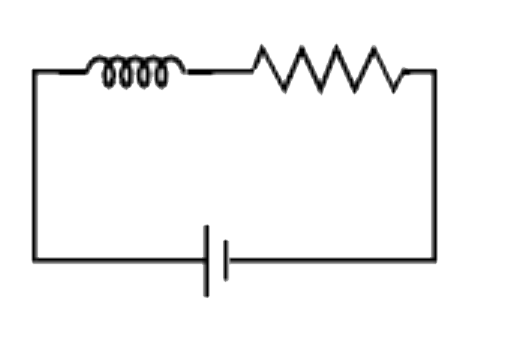Two resistance wires of the same material and of equal lengths and equal diameters are connected in series in a simple electric circuit consisting of a voltage source of voltage V. Now, the same wires are connected in parallel in the same circuit for the same time but voltage source is replaced by another voltage source of voltage 2V. The ratio of heat produced in the two cases is
1:1
1:4
1:8
1:16
The correct Answer is:D
To solve the problem, we need to analyze the heat produced in both cases: when the two resistance wires are connected in series and when they are connected in parallel.
1. Identify the Resistance of Each Wire:
Since both wires are made of the same material, have equal lengths, and equal diameters, their resistances (R) will be equal. The resistance of a wire is given by the formula:
R=ρLA
where ρ is the resistivity, L is the length, and A is the cross-sectional area.
2. Case 1: Wires in Series:
When the two wires are connected in series, the total resistance Req1 is:
Req1=R+R=2R
The heat produced H1 in a resistor is given by:
H=V2R⋅t
For the series connection, the heat produced H1 is:
H1=V2Req1⋅t=V22R⋅t
3. Case 2: Wires in Parallel:
When the two wires are connected in parallel, the total resistance Req2 is:
1Req2=1R+1R⇒Req2=R2
The new voltage source is 2V. The heat produced H2 in this case is:
H2=(2V)2Req2⋅t=4V2R/2⋅t=8V2R⋅t
4. Calculate the Ratio of Heat Produced:
Now we need to find the ratio H1H2:
H1H2=V22R⋅t8V2R⋅t
The t and V2 cancel out:
H1H2=12⋅R8=116
5. Final Result:
Thus, the ratio of heat produced in the two cases is:
H1:H2=1:16
Since both wires are made of the same material, have equal lengths, and equal diameters, their resistances (R) will be equal. The resistance of a wire is given by the formula:
R=ρLA
where ρ is the resistivity, L is the length, and A is the cross-sectional area.
When the two wires are connected in series, the total resistance Req1 is:
Req1=R+R=2R
The heat produced H1 in a resistor is given by:
H=V2R⋅t
For the series connection, the heat produced H1 is:
H1=V2Req1⋅t=V22R⋅t
When the two wires are connected in parallel, the total resistance Req2 is:
1Req2=1R+1R⇒Req2=R2
The new voltage source is 2V. The heat produced H2 in this case is:
H2=(2V)2Req2⋅t=4V2R/2⋅t=8V2R⋅t
Now we need to find the ratio H1H2:
H1H2=V22R⋅t8V2R⋅t
The t and V2 cancel out:
H1H2=12⋅R8=116
Thus, the ratio of heat produced in the two cases is:
H1:H2=1:16
Topper's Solved these Questions
Similar Questions
Two conducting wires of the same material and of equal lengths and equal diameters are first connected in series and then parallel in a circuit across the same potential difference. Find the ratio of heat produced in series and parallel combination.
View SolutionTwo wires A and B of the same material and having same length, have their cross-sectional areas in the ratio 1:6. what should be the ratio of heat produced in these wires when same voltage is applied across each ?
View Solution
Knowledge Check
Two conducting wires of the same material and of equal length and equal diameters are first connected in series and then in parallel in an electric circuit. The ratio of the heat produced in series and parallel combinations would be :
A1:2B2:1C1:4D4:1Two conducting wires of the same material and of equal lengths and equal diameters are first connected in series and then parallel in a circuit across the same potential difference. The ratio of heat produced in series and parallel combinations would be:
A1:2B2:1C1:4D4:1Two conducting wires of the same material and of equal lengths and equal diameters are first connected in series and then parallel in a circuit across the same potential difference. The ratio of heat produced in series and parallel combination would be:
A1:2B2:1C1:4D4:1
Two heating wires of equal length are first con nected in series and then in parallel to a constant voltage source. The rate of heat produced in the two cases is
View SolutionTwo conducting wires have equal lengths equal diameters are first connected in series and then parallel in a circuit across the same potential difference. The ratio of heat produced in series and parallel combinations would be:
View SolutionIf electric bulbs having resistances in the ratio 2 : 3 are connected in parallel to a voltage sources of 220 V. The ratio of the power dissipated in them is
View SolutionTime constant of the given circuit is τ If the battery is replaced by an ac source having voltage V=V0cosωt , power factor or the circuit will be

View SolutionThe voltage across the two equal resistances connected in series get balanced at 400cm. length of the potentiometer wire. If they are connected in parallel and same amount of current is passed the balancing length will be
View Solution
